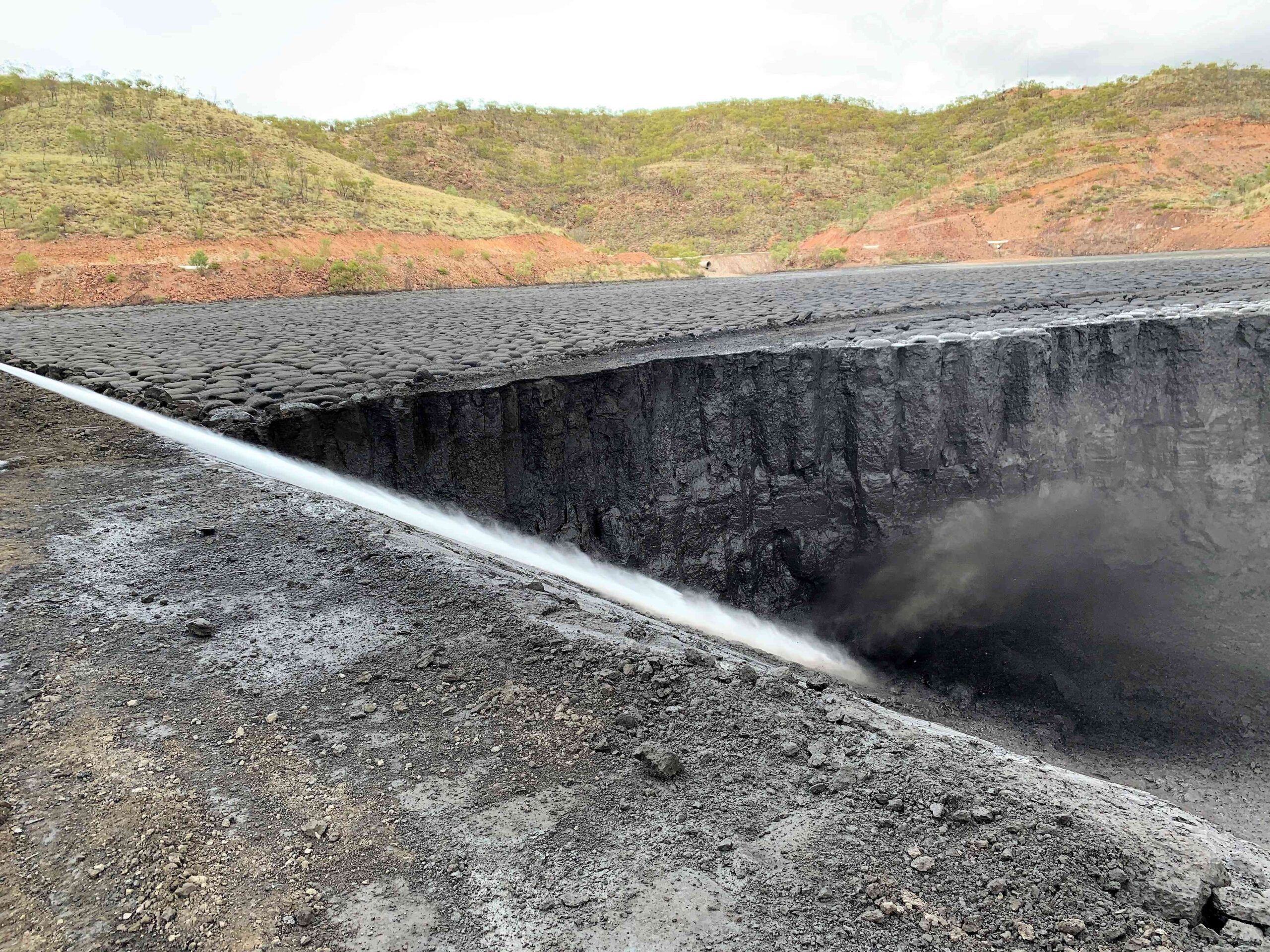Hydromining or Hydraulic Mining has its history in the California Gold rush days of the mid 19th Century, where it was used to wash entire hillsides through enormous sluices. The process was simple, large volumes of high pressure water were fed through nozzles (called monitors) to create powerful jets that would cut through soft surface terrain which would then be fed through sluice boxes and allow gold to be removed. However the vast destruction of the natural terrain as well as the enormous amounts of water required to sustain it led to it being banned or more heavily regulated.
These days hydromining has seen a resurgence, with commodity prices increasing, and advancements in technology, mines are beginning to look at reprocessing some of their old higher-grade Tailings.
The contemporary process is similar, high pressure water monitors are used to ‘mine’ the tailings and large channels are developed to direct the now re-slurried tailings to a common point. The slurry is then pumped back to processing facilities where extraction can take place.
In the form of an analogy with regular mining, consider it this way. Water now takes the place of your explosives, with the water cannons taking the place of your mining equipment. Rather than LHD’s, we have the channels and pumps transporting ore to the drawpoints or in hydro mining cases the slurry hopper. Then instead of trucks and haul roads we have pumps and pipes transporting product to the processing facility.
So what are some of the key considerations when designing a hydromining operation?
Power
As mentioned above, Hydromining essentially is pumping high pressure water to perform the act of mining. Further, once the tailings are re-slurried, it generally needs to be pumped to the processing facility. Just these two operations will require vast amounts of pumping power. It is therefore incredibly important to ensure that careful pump selection impeller and piping design is performed to ensure the pumps selected are suitable for the system duty, have minimal losses and are operating as close to their BEP as possible. Given the large volumes of power consumed, even marginal improvements in efficiency can translate to large operational savings through the course of their operation.
Water
Other than electricity the other key component for any hydromining operation is a large supply of water. The more work fronts you have, the more monitors you will require and the larger the overall volume of water is needed. It is therefore important to have large volumes of water available at the operation, as well as having that water constantly replenished. Storage can take the form of dams and tanks but the larger the volume stored locally the better as it allows for buffer capacity. Design of systems to replenish the water supply is also critical, and multiple sources and standby systems should be considered when designing a hydromining facility. Water is literally the lifeblood of a hydromining system and running out will mean a loss of production.
Given the importance of water, it is also prudent to minimise its use whilst keeping operational efficiency high. This is done by ensuring correct monitor design from day one. A poorly designed monitor will require more volumes of water to achieve the same performance as that of a correctly sized one.
Slurry
Ensuring a robust and efficient slurry transfer system is implemented is key to long term project success. Designing a slurry pumping system for hydromining is a little different to that of one designed for regular process operations. The key difference is the irregular properties of the slurry that is to be handled. Whereas in normal process slurry system design, there is a relative consistency in the slurry rheology and physical parameters. In a hydromining facility, these parameters may vary greatly. The slurry that reaches the slurry transfer pumps could have different densities, particle distributions depending on where the current tailings is being mined. This means that any slurry system design will require a much greater sensitivity analysis than is normally required and that the final design of the system needs to handle this range of media.
Safety in Design
When designing a hydromining system, safety in design must be considered throughout the design and development process. Like most mining operations, the hydromining process has inherent risks that must be mitigated these include for instance, pumping large volumes of water at high pressures and the corresponding risk of the uncontrolled release of that energy.
Ensuring these hazards are clearly identified and mitigated throughout the design process via HAZOPS and Design Risk Assessments will lead to a functioning and safe operation.



